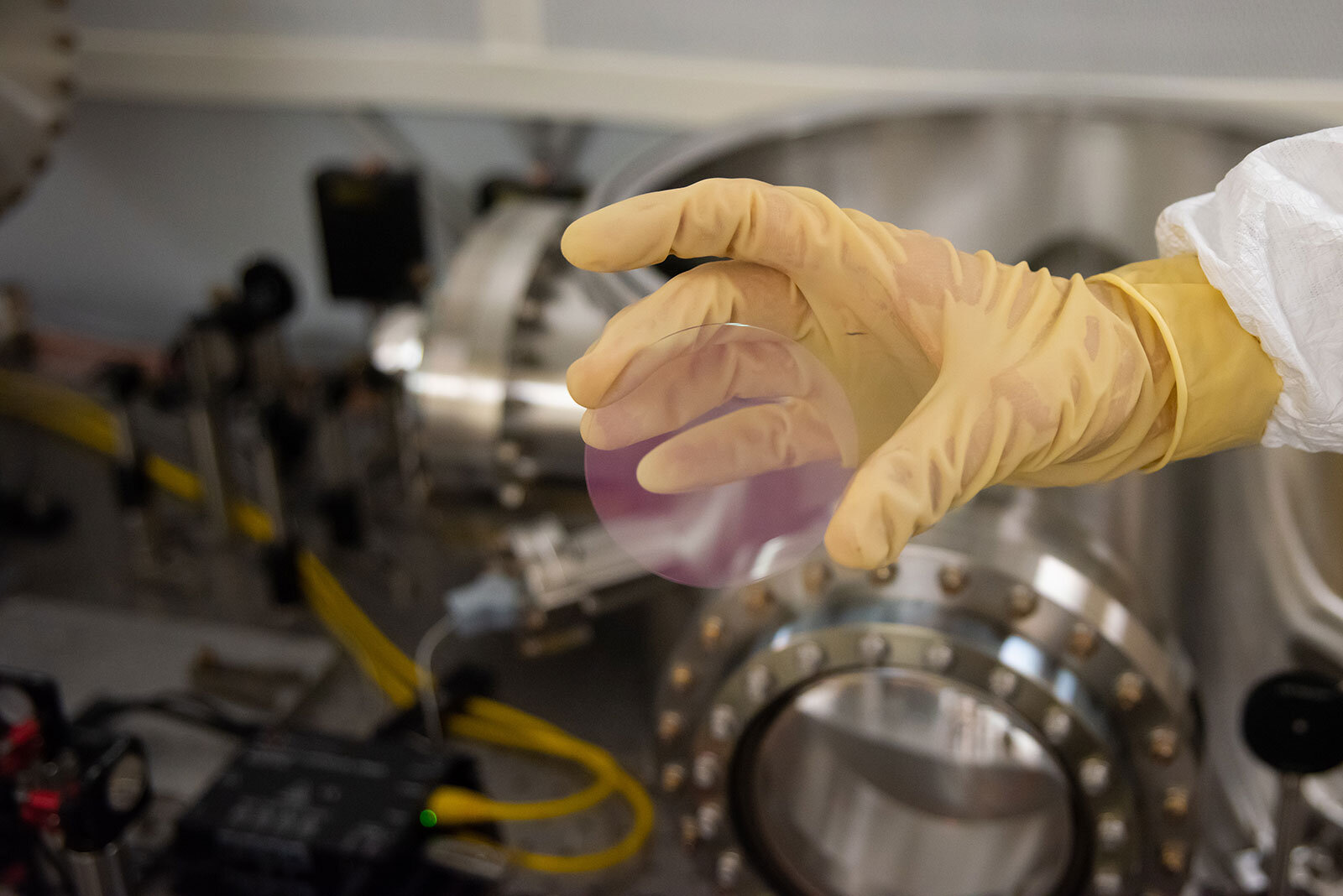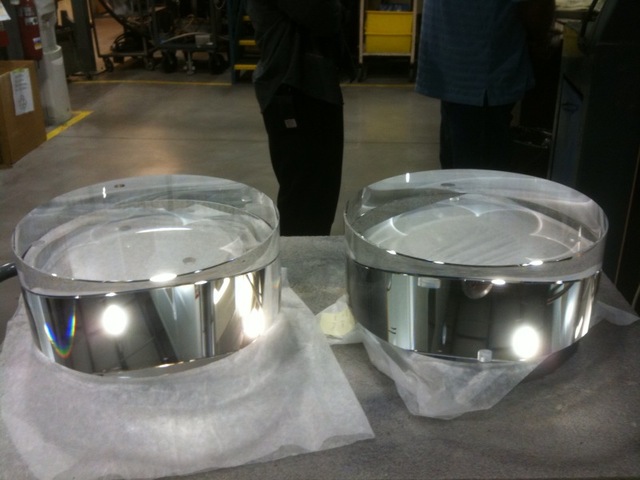Science
Related: About this forumExtending our reach into the cosmos with new mirror coatings
I only excerpted 4 paragraphs from this article. The article goes on to give a short overview of how they detect ripples in spacetime and also how automation speeded up the testing time of new materials.
From phys.org:

Since the Laser Interferometer Gravitational-wave Observatory (LIGO)'s groundbreaking detection, in 2015, of gravitational waves produced by a pair of colliding black holes, the observatory, together with its European partner facility Virgo, has detected dozens of similar cosmic rumblings that send ripples through space and time.
In the future, as more and more upgrades are made to the National Science Foundation-funded LIGO observatories—one in Hanford, Washington, and the other in Livingston, Louisiana—the facilities are expected to detect increasingly large numbers of these extreme cosmic events. These observations will help solve fundamental mysteries about our universe, such as how black holes form and how the ingredients of our universe are manufactured.
One important factor in increasing the sensitivity of the observatories involves the coatings on the glass mirrors that lie at the heart of the instruments. Each 40-kilogram (88-pound) mirror (there are four in each detector at the two LIGO observatories) is coated with reflective materials that essentially turn the glass into mirrors. The mirrors reflect laser beams that are sensitive to passing gravitational waves.
Generally, the more reflective the mirrors, the more sensitive the instrument, but there is a catch: The coatings that make the mirrors reflective also can lead to background noise in the instrument—noise that masks gravitational-wave signals of interest.
more ...
endinequalitynow
(33 posts)The odds are ever increasing that we detect intelligent life with one of these instruments. I can't wait to see the headline of the NYT when we get a video from another civilization. For now, we'll just have to be content with black holes and gravitational wave data.
eppur_se_muova
(36,260 posts)alternating thin layers of TiO2 and GeO2. (The article refers to a "combination" of these two materials.) Very high reflectivities like this are achieved with such dielectric coatings. TiO2 is old hat; GeO2 is new.
"40 kg mirror"? Umm, what's the diameter ? That's what determines optical performance.
Jim__
(14,075 posts)"We tailored the fabrication process to meet the stringent demands in optical quality and reduced thermal noise of the mirror coatings," says Carmen Menoni, professor at Colorado State University and member of the LIGO Scientific Collaboration. Menoni and her colleagues at Colorado State used a method called ion beam sputtering to coat the mirrors. In this process, atoms of titanium and germanium are peeled away from a source, combined with oxygen, and then deposited onto the glass to create thin layers of atoms.
I'm not sure if those are alternating layers.
The write-up at Caltech on LIGO Optics also seems to emphasize the masses of the mirrors. The write-up on vibration isolation does mention the size of the test-mass (34cm x 20 cm) but the main concern seems to be isolating vibrations. The write-up from Caltech is on the technology currently in use.
A short excerpt:
Two of LIGO's 'test masses' (mirrors), so called because they 'test' (or feel for) changes in LIGO's arm-lengths caused by a passing gravitational wave. Each silica cylinder weighs 40 kg. (Caltech/MIT/LIGO Lab)
LIGO’s test-masses are made of fused silica, cast from ultra-pure material with low OH (hydroxide) content to minimize infrared (IR) absorption. Since LIGO’s laser is an IR laser, its optics must not absorb IR radiation. Doing so would result in heating and in significant changes to the shape of the mirrors, thus critically affecting LIGO’s ability to make the precise measurements it needs to make. LIGO’s main mirrors only absorb one out of every 3.3 million photons, the rest being reflected (or transmitted). Some heating does occur, but an auxiliary system using a CO2 laser heats the mirrors precisely enough to counteract the shape-changes that occur as a result of heating from LIGO’s main laser.
LIGO’s optics are also hefty. The input and end test-masses each weigh 40 kg (88 lbs.) giving them large inertial masses that intrinsically provide some level of vibration resistance thanks to Newton's law of Inertia (although much more is required. See Vibration Isolation). The image at right shows two of LIGO's beautiful test-masses before they were installed in the interferometer.
[the image at right - Jim]
 ?1430438197
?1430438197
Two of LIGO's 'test masses' (mirrors), so called because they 'test' (or feel for) changes in LIGO's arm-lengths caused by a passing gravitational wave. Each silica cylinder weighs 40 kg. (Caltech/MIT/LIGO Lab)
...
eppur_se_muova
(36,260 posts)... most precision mirror designers are designing for telescopes, and want the lightest big mirror they can get, sometimes going to extreme lengths to cut weight ! With big mirrors weighing many tons, it just seems natural to expect that. The nature of this experiment turns that on its head. Interesting.
I guess those in the multitudinous LIGO community know to impress each other with the mass of their mirrors, not their diameters, so that's what they advertise! ![]()
NNadir
(33,513 posts)...space junk.
Jim__
(14,075 posts)The coating they are talking about is for mirrors that are located on interferometers and are concerned with measuring the length (and specifically any changes in length) of the interferometer's arms. Any impact that Musk's space junk could possibly have would come as environmental noise. The design of gravitational wave observatories is largely concerned with factoring out environmental noise, so noise from space junk would not cause any additional problem.
The article refers to our reach into the cosmos but this reach involves observing gravitational waves and then using multiple, geographically separated, detectors to identify the direction of the source of the wave. From LSC:
NNadir
(33,513 posts)...and I assumed we were talking about optical scopes.
Apologies, my bad.
Musk may prevent visual observations but future generations may still know that the universe exists by the wiggle of spacetime.